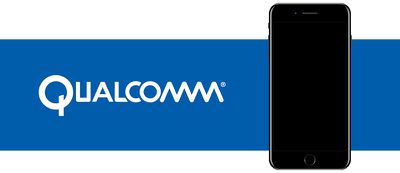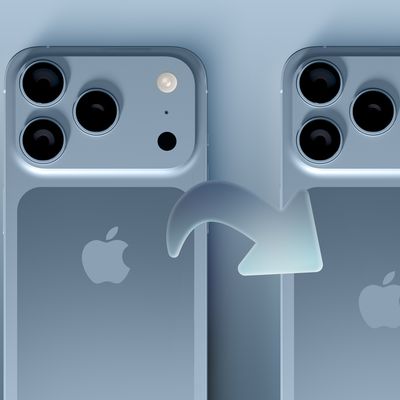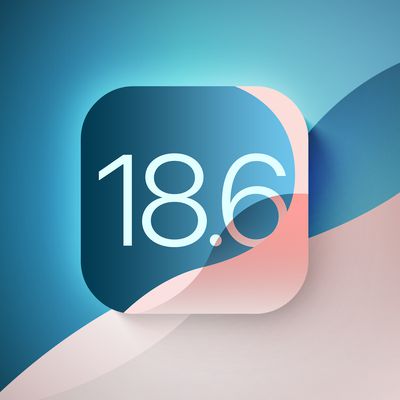Apple Countersues Qualcomm for Patent Infringement Related to Snapdragon Chips
In the ongoing legal feud between Apple and LTE chipmaker Qualcomm, Reuters reports today that Apple has made the latest move by filing a countersuit against Qualcomm and claiming that the supplier's Snapdragon chips -- used in many Android devices -- infringe on the Cupertino company's patents.
The countersuit is Apple's retaliation against Qualcomm after the latter company sought iPhone and iPad import bans in the United States over the summer. At the time, Qualcomm alleged that Apple infringed on six Qualcomm patents related to carrier aggregation and technologies that were designed to allow iPhones to save battery life while communicating. Apple denied any of these claims and said that Qualcomm's patents were "invalid."

Apple's new countersuit further revises its answer to Qualcomm's complaint from July by adding on the accusation of patent infringement surrounding the Snapdragon chips. The filing alleges that Apple owns "at least" eight battery life patents Qualcomm has violated, related to making sure that each part of the phone's processor draws only minimum power needed to function, powering down parts of the processor when not needed, and ensuring that sleep and wake functions work better for the user.
Apple specifically says that Qualcomm's Snapdragon 800 and 820 processors -- included in Samsung and Google smartphones -- infringe on these patents, but Apple has only named Qualcomm in its counter lawsuit. The specific monetary damages Apple is looking for were not disclosed.
Apple Inc on Thursday filed a countersuit against Qualcomm Inc, alleging that Qualcomm’s Snapdragon mobile phone chips that power a wide variety of Android-based devices infringe on Apple’s patents, the latest development in a long-running dispute.
“Apple began seeking those patents years before Qualcomm began seeking the patents it asserts against Apple in this case,” the company wrote in its complaint.
2017 has seen rebuttal after rebuttal in the Apple versus Qualcomm legal battle, kicking off in January when the FTC complained that Qualcomm had engaged in anticompetitive patent licensing practices. Soon after, Apple sued Qualcomm for $1 billion, accusing the company of charging unfair royalties for "technologies they have nothing to do with" and refusing to pay quarterly rebates. A Qualcomm countersuit followed in April, and the dispute escalated throughout the year with expanded lawsuits and claims lodged by each side.
Over the summer, Qualcomm began facing an additional lawsuit from the United States Federal Trade Commission, happening separately from the dispute with Apple but covering many of the same anticompetitive tactics that Apple claims in its own lawsuit.
Popular Stories
Apple's next-generation iPhone 17 Pro and iPhone 17 Pro Max are less than three months away, and there are plenty of rumors about the devices.
Apple is expected to launch the iPhone 17, iPhone 17 Air, iPhone 17 Pro, and iPhone 17 Pro Max in September this year.
Below, we recap key changes rumored for the iPhone 17 Pro models:Aluminum frame: iPhone 17 Pro models are rumored to have an...
The long wait for an Apple Watch Ultra 3 appears to be nearly over, and it is rumored to feature both satellite connectivity and 5G support.
Apple Watch Ultra's existing Night Mode
In his latest Power On newsletter, Bloomberg's Mark Gurman said that the Apple Watch Ultra 3 is on track to launch this year with "significant" new features, including satellite connectivity, which would let you...
The upcoming iPhone 17 Pro and iPhone 17 Pro Max are rumored to have a slightly different MagSafe magnet layout compared to existing iPhone models, and a leaked photo has offered a closer look at the supposed new design.
The leaker Majin Bu today shared a photo of alleged MagSafe magnet arrays for third-party iPhone 17 Pro cases. On existing iPhone models with MagSafe, the magnets form a...
iOS 26 and iPadOS 26 add a smaller yet useful Wi-Fi feature to iPhones and iPads.
As spotted by Creative Strategies analyst Max Weinbach, sign-in details for captive Wi-Fi networks are now synced across iPhones and iPads running iOS 26 and iPadOS 26. For example, while Weinbach was staying at a Hilton hotel, his iPhone prompted him to fill in Wi-Fi details from his iPad that was already...
The iPhone 17 Pro Max will feature the biggest ever battery in an iPhone, according to the Weibo leaker known as "Instant Digital."
In a new post, the leaker listed the battery capacities of the iPhone 11 Pro Max through to the iPhone 16 Pro Max, and added that the iPhone 17 Pro Max will feature a battery capacity of 5,000mAh:
iPhone 11 Pro Max: 3,969mAh
iPhone 12 Pro Max: 3,687mAh...
Apple today seeded the second betas of upcoming iOS 18.6 and iPadOS 18.6 updates to public beta testers, with the betas coming just a day after Apple provided the betas to developers. Apple has also released a second beta of macOS Sequoia 15.6.
Testers who have signed up for beta updates through Apple's beta site can download iOS 18.6 and iPadOS 18.6 from the Settings app on a compatible...
Apple is developing a MacBook with the A18 Pro chip, according to findings in backend code uncovered by MacRumors.
Subscribe to the MacRumors YouTube channel for more videos.
Earlier today, Apple analyst Ming-Chi Kuo reported that Apple is planning to launch a low-cost MacBook powered by an iPhone chip. The machine is expected to feature a 13-inch display, the A18 Pro chip, and color options...




















